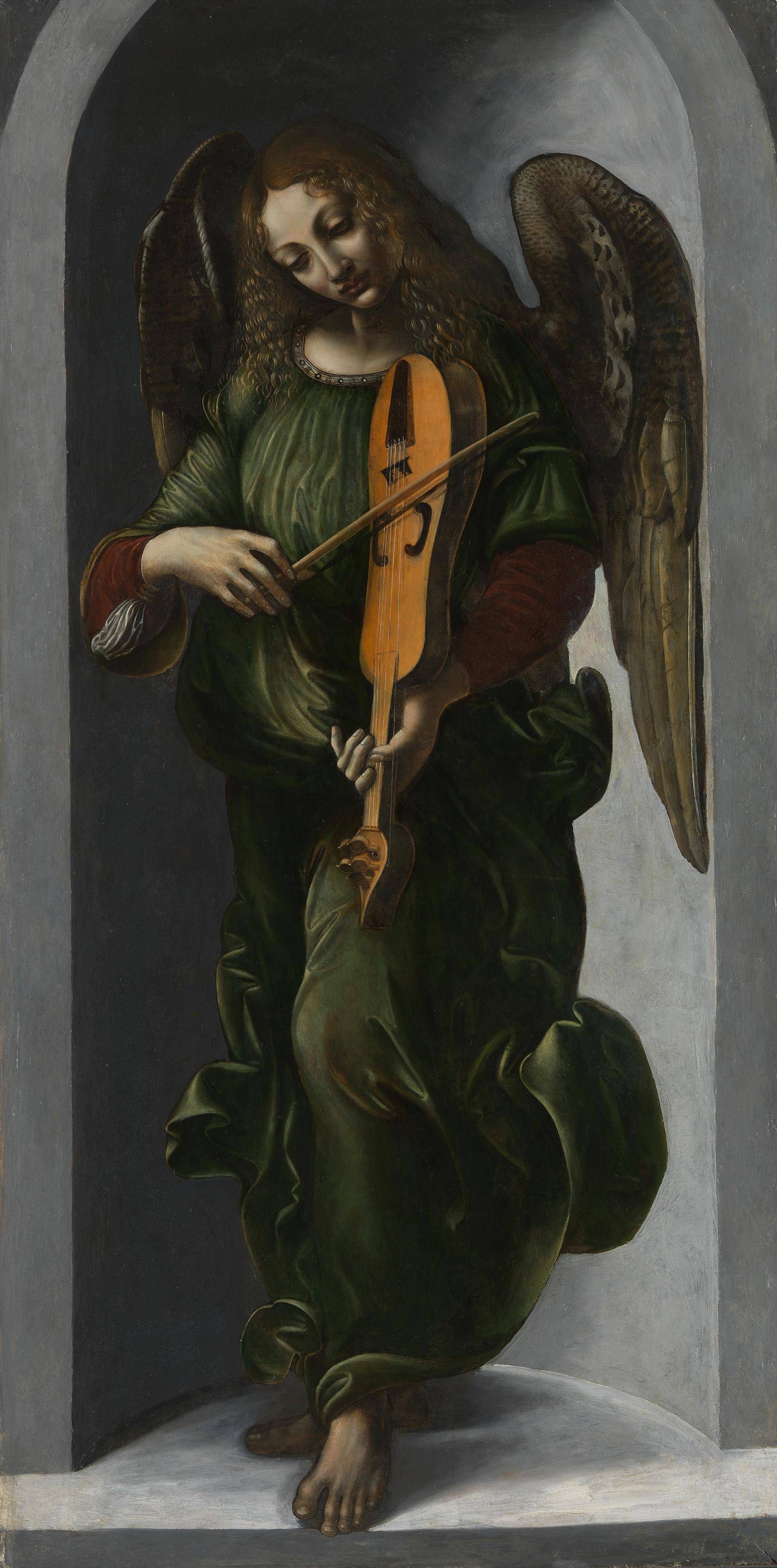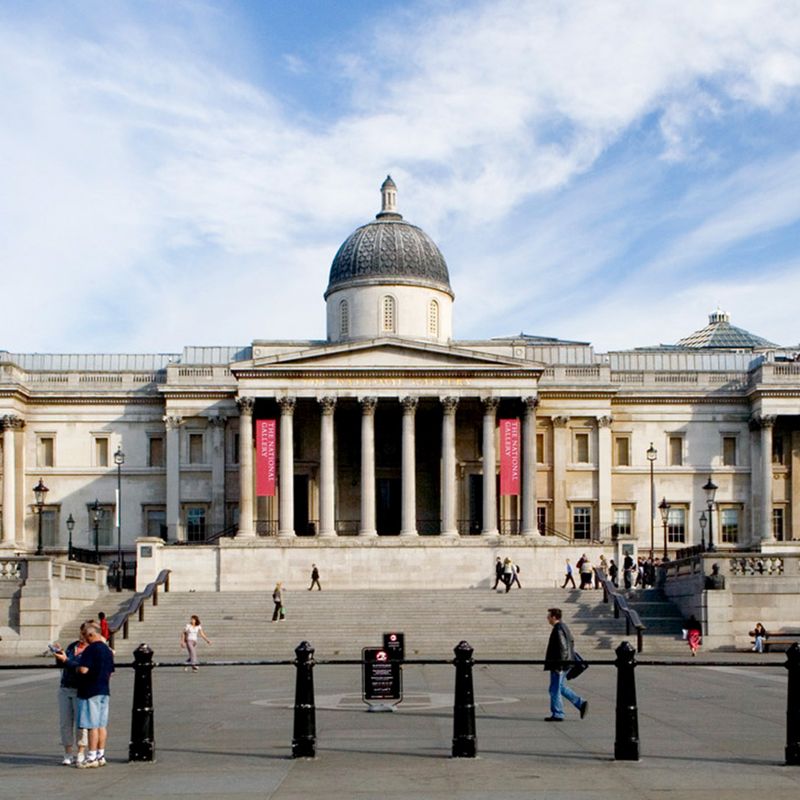
An Angel in Green with a Vielle

An angel is absorbed in playing the vielle, a type of fiddle. Eyes half closed, head bent to one side, he contemplates its sound. His long robes ruffle up around him as though dancing to the tune he plays. This angel is one of a pair - his companion plays a lute. Both panels were part of a large, elaborate sculpted wooden altarpiece that included a large sculpture of the Virgin Mary and Leonardo da Vinci's painting, now known as the 'Virgin of the Rocks'.
The angels were probably designed as graceful musical accompaniments to frame a sculpture of the Virgin which stood above Leonardo's painting. Later on, in the late sixteenth century, when the chapel that the altarpiece had been made for was destroyed, the altarpiece was moved and re-designed: some parts of it were sold, while others were moved around. The angels ended up on either side of Leonardo's painting. Later still, Leonardo's painting was removed altogether and the angels switched position again. At some point during all this moving around, the angels were extended, cut down and placed within grey arches, painted to resemble niches for sculpture. The stark simplicity and rough painting of the niche doesn't complement the elegance and precision of the angel's features, skin and drapery.
The names of four artists appear in the original contract for the altarpiece, including the half-brothers Ambrogio and Evangelista de Predis, who were both working in Milan at around this time. This angel has sometimes been thought to be by Evangelista, but we now think it was painted after his death. It's possible that Ambrogio enlisted his friend Francesco Napoletano to paint it instead. They had worked together in the past and so Ambrogio would have known his work well.
Whoever the artist was, they obviously admired Leonardo and tried to copy his style here. The angel's face is shaped using light, which makes it seem three-dimensional. Some areas, like the eye sockets, are almost completely in shadow, giving the sense that they are sunken. But the fleshy chin and cheeks, and the areas that catch the light - the nose and forehead - are painted in bright, almost white, paint. If you compare this to the way that Leonardo shaped faces in The Virgin of the Rocks you can see how similar the technique is. The angel's face, hair and the way in which he bends his head are so similar to Leonardo's image of Saint John the Evangelist, painted for the fresco of the Last Supper in Milan in the mid to late 1490s, that it might even be based on it.
Credit: Bought, 1898
c. 1490-9
Oil on wood
117.2 x 60.8 cm
NG1661
Image and text © The National Gallery, London, 2025
Where you'll find this

National Gallery
Permanent collection




